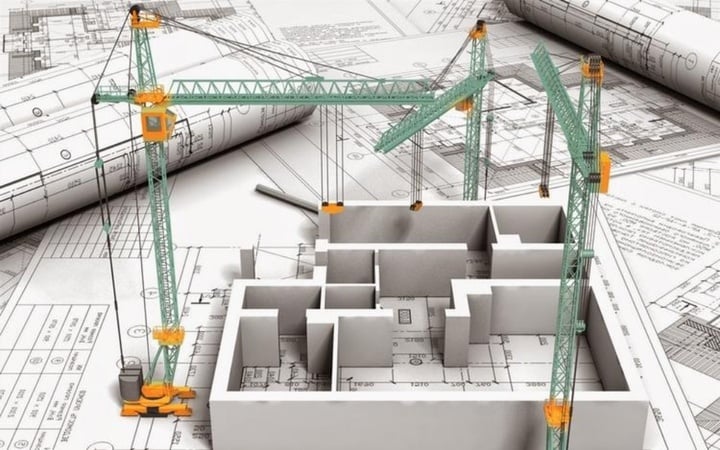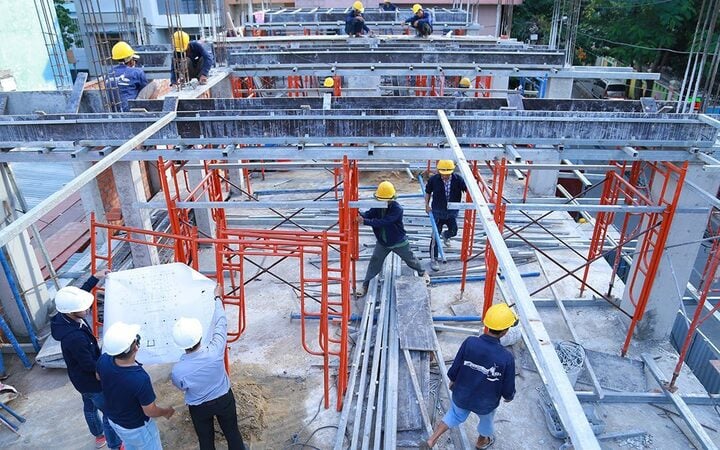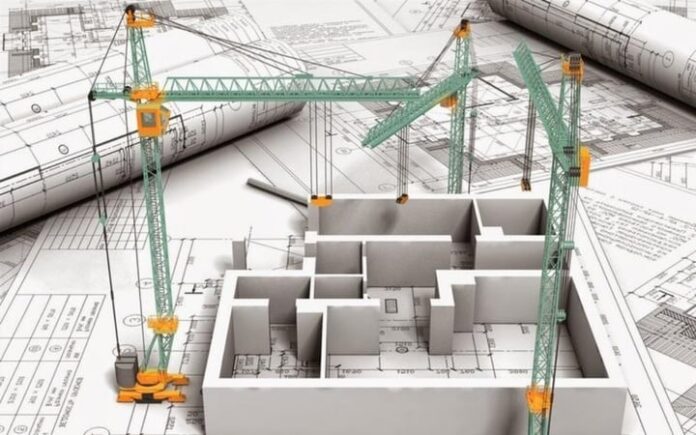Mr. Tran Van Nhan from Hanoi shared that in late 2023, he purchased a 30 sq. m plot of land with the intention of constructing a 5-story house for his family in early 2024. In February 2024, Mr. Nhan began the process of obtaining a building permit. He soon realized that the procedures were more complicated than he anticipated, with numerous documents and complex steps involved.
To obtain the permit, Mr. Nhan had to prepare a set of documents, including a building permit application, construction design drawings, and a copy of the “red book” proving land use rights. The most costly item in this list was the design drawings, for which he had to hire a designer for VND 25 million.
Even with a professional designer, the drawings had to be revised multiple times before being accepted. “Sometimes the existing state of the drawings was incorrect, such as discrepancies between the house and the information in the red book or inaccuracies in depicting the location, floor plan, cross-section, or boundaries of the structure,” Mr. Nhan said.
It took two months for the district and ward to verify and approve the documents and issue a 15-day wait notice. However, when Mr. Nhan returned on the specified date, he was informed that the process was not yet complete and that further checks were needed.

People often have to wait for months to obtain a building permit. (Illustrative image)
“It took me three months from preparing the construction drawings to completing the necessary procedures, and I had to make multiple trips, which was time-consuming and costly,” shared Mr. Nhan. He added that his family had intended to start construction in March 2024 and had submitted the permit application in early February, but by May, they still hadn’t received the permit.
“We carefully chose an auspicious date for the construction of our house. We had planned and prepared the necessary procedures for obtaining the permit, but due to the lengthy process, we had to postpone the groundbreaking until the end of 2024 to select another auspicious date,” Mr. Nhan explained.
Mr. Nhan also mentioned that due to the complicated procedures and the lack of time to go through the process, some of his neighbors opted to pay extra to use a permit application service. “So, in addition to the official costs and time, we also had to spend more money on the ‘permit runners,'” he added.
According to Mr. Nguyen Tuan Anh, a construction engineer in Hanoi, the law stipulates that obtaining a building permit for an individual house should take only 15 working days. However, the complex and overlapping legal regulations, especially regarding land-use rights, urban planning, road boundaries, and building heights, make it challenging for citizens to understand and prepare the necessary documents.
Citizens often face issues with their land-use rights documents, such as outdated information, land subject to planning suspension, land disputes, or lack of land-use certificates. Additionally, some design consulting firms have limited expertise, resulting in simplistic or inaccurate designs that do not conform to standards and regulations, leading to further time and cost for revisions and supplements.
Numerous negative consequences arise
Lawyer Nguyen Thanh Ha, Chairman of SBLaw, pointed out that while the current Law on Construction 2014 (amended and supplemented in 2020) mandates obtaining a building permit for most structures, including individual houses in urban areas, this requirement has become a burden for citizens.
Completing a building permit application typically takes about a month and incurs an average cost of over VND 10 million for design drawings, not to mention various other unofficial fees. As not everyone can handle the process themselves, many resort to using intermediary services or “permit runners,” which can lead to corruption and harassment.

Many design drawings are made merely to comply with permit requirements and are often altered during construction. (Illustrative image)
Notably, many design drawings are made merely to comply with permit requirements and are often altered during construction. Common violations include blocking inter-floor openings and encroaching on setbacks, highlighting the ineffectiveness of the current pre-construction inspection mechanism.
Mr. Tong Van Nga, Vice Chairman of the Vietnam Construction Association, shared a similar view, stating that the current permit process is fraught with problems. Citizens must endure lengthy procedures and high costs to obtain a building permit, yet construction order violations remain rampant, with many structures deviating from their approved designs. He emphasized the need for effective post-construction inspections and strict handling of violations.
“The Prime Minister’s directive to eliminate unnecessary procedures, including building permits, is entirely reasonable,” said Mr. Nga. “To achieve this, local authorities must have detailed plans for each area, specifying maximum heights, distances from the house to the sidewalk, colors, designs, etc.”
“The focus should shift to post-construction inspections, with strict penalties for any violations. With proper planning and rigorous post-construction management, the need for building permits would become obsolete,” he concluded.
















